
From Idea to Impact: Mind Mapping Your Content and Amplifying Its Reach
Khyati Arora
Posted on March 20, 2023
Content creation can sometimes feel like a messy game of Tetris – you have all these ideas and bits of information bouncing around in your brain, and it can be hard to fit them together in a way that makes sense. But fear not, my fellow creators!
Today, we’ll introduce you to the ultimate organizational tactic for your content creation process – mind mapping. Not only will this technique help you sort through your ideas and create content that connects with your audience, but it might also make you feel like a genius detective, connecting clues and solving cases (or maybe that’s just me).
So, grab your magnifying glass, and let’s dive into the world of mind mapping writing skills! And of course we will also look into an example of mind map about creative writing.
What is Mind Mapping?
Mind mapping is a visual technique that involves organizing information around a central idea, using branches to connect related concepts and subtopics. It’s a great way to brainstorm ideas and clarify your thinking, allowing you to generate new ideas and see relationships between different pieces of information.
A mind map typically starts with a central idea, surrounded by subtopics or related topics. Each subtopic can be further expanded with additional sub-ideas or details, creating a hierarchical and interconnected web of information.
Mind maps can be created by hand with a pen and paper or digitally using specialized software or apps. They can be used for a variety of purposes, such as project planning, note-taking, problem-solving, decision-making, and learning. The flexible and intuitive nature of mind mapping makes it a useful tool for individuals across various fields and industries.
How Mind Mapping is Essential for Content Creation
When it comes to content creation, mind mapping writing skills help you to organize your ideas and identify key themes. By mapping out your content before you start writing, you can create a structure that ensures your content is both coherent and engaging.
This can help you to write more efficiently, reduce writer’s block, and produce content that resonates with your audience. Moreover, it can help you identify gaps in your content and plan future content that addresses these gaps to create a cohesive content strategy.
We’ll take you through the five essential steps to mindmap your content and increase its reach. By using this technique, you’ll not only be able to organize your ideas in a more structured manner, but also create content that resonates with your audience and drives engagement.
So whether you’re a blogger, marketer, or content creator, read on to learn how to unlock the full potential of your content with mind mapping.
Step #1: Define Your Topic
The first step in creating any piece of content is to choose a topic that you want to write about. When selecting a topic, you need to consider your target audience and what they’re interested in. What questions do they have? What problems are they trying to solve? What information can you provide that they can’t find elsewhere?
Techniques for Brainstorming Topic Ideas
Once you have an idea of what your audience is looking for, it’s time to brainstorm potential topics. A few techniques you can use to generate ideas are as follows:
- Freewriting: Set a timer for a specific amount of time (e.g., 10 minutes) and write down everything that comes to mind on a specific topic, without worrying about structure or grammar.
- Keyword research: Use tools like Serpple to identify popular topics and keywords related to your industry or niche. Serpple is an advanced SEO tool that provides you with accurate data about the keywords of your niche along with top queries, performance reports, and more.
Is It Important to be Specific with Topic?
Yes, it is. Once you have a list of potential topics, choose one that’s specific enough to be manageable but broad enough to be interesting.
For example, ‘ Top SEO Trends to Watch in 2023’ is a more specific and engaging topic than ‘Top trends to watch’. When your topic is too broad, you risk losing the attention of your audience and diluting your message. By choosing a specific topic, you can provide valuable, targeted information that resonates with your readers and keeps them coming back for more.
Step 2: Identify Main Points
Once you have a specific topic in mind, the next step is to identify the main points that you want to cover. These main points will help you structure your content and ensure that your message is clear and organized. To identify your main points, consider the following:
- What are the key takeaways that you want your readers to get from your content?
- What are the most important aspects of your topic?
- What subtopics or ideas support your main topic?
How to Organize Information into Main Points?
Once you’ve identified your main points, organize your information logically and coherently.
- Some tips for organizing your information include:
- Using bullet points or numbered lists to break up information
- Grouping related information together
- Creating headings and subheadings to signal changes in topic or focus
- Using transitions to guide readers from one point to the next.
How It Helps?
Having clear main points for your content can benefit both you and your audience. For you, it helps to ensure that your content stays focused and on-topic, making it easier to write and revise.
For your audience, clear main points make your content easier to read and understand and help them quickly identify the key takeaways. This can increase engagement and make your content more shareable, helping to increase its reach.
Step 3: Branch Out Sub-Topics
Once you have identified your main points, the next step is to branch out into sub-topics that support each main point. To generate sub-topics, consider:
- What details or examples can you include to support your main point?
- Are there any related concepts or ideas that you can explore?
- What questions might your audience have about your main point that you can address in your sub-topics?
Techniques for Organizing Sub-Topics Within The Mind Map
Organizing your sub-topics within the mind map can help you to see how they relate to each other and the main points. Some techniques for organizing your sub-topics include:
- Creating sub-branches that are connected to the main branches.
- Using colors, symbols, or images to differentiate between sub-topics.
- Creating sub-topics that are nested within other sub-topics.
- Adding notes or comments to each sub-topic to provide additional details or ideas.
Why Having A Comprehensive Mind Map for Your Content Helps?
A comprehensive mind map can help you to see the big picture of your content and ensure that you cover all the necessary information related to your topic. It also helps you to organize your thoughts in a visual and easily accessible way, making it easier to write and revise your content.
Additionally, a well-organized mind map can help your audience understand your content more easily and increase engagement with your content.
Step 4: Give Personalized Touch with Details and Examples
Now it’s time to add details and examples to support your content and make it better to understand for the readers. Adding details and examples can help to clarify your points and make your content more engaging and informative for your audience.
To add details and examples to your mind map, get the answers to these questions:
- What information do you need to provide to explain each main point and sub-topic?
- What specific examples or evidence can you use to support your ideas?
- How can you organize the details and examples within the mind map to clearly show how they support each main point and sub-topic?
How to Select Relevant Details and Examples?
Techniques for selecting relevant details and examples include:
- Using personal anecdotes or stories to illustrate your points
- Including statistics or research to provide evidence for your ideas
- Using visual aids such as charts, diagrams, or images to clarify complex concepts
- Considering the needs and interests of your target audience when selecting examples and details.
Prominence of Supporting Your Content with Evidence and Examples
Adding relevant details and examples is crucial to supporting your main points and sub-topics. By providing evidence, examples, and anecdotes, you can make your content more compelling, memorable, and engaging for your audience.
Supporting your content with evidence and examples can also increase your credibility as a writer or content creator.
Step 5: Finalize and Optimize your Mind Map
Now that you have added details and examples to your mind map, it’s time to finalize and optimize it for content creation. This step involves reviewing and refining your mind map to ensure that it is clear, organized, and easy to use as a reference throughout the content creation process.
Here are the steps to review and optimize your mind map:
- Checking for any gaps or missing information
- Ensuring that your main points and sub-topics are clearly defined and organized
- Refining your details and examples to ensure that they support your main points and sub-topics effectively
- Checking that your mind map is visually appealing and easy to read
- Using colors, symbols, and other visual aids to help you quickly identify different sections and information
Strategies to Improve The Clarity and Organization of your Mind Map
Techniques for improving the clarity and organization of your mind map include:
- Using clear and concise language to describe your main points and sub-topics
- Breaking down complex concepts into smaller, more manageable ideas
- Grouping related information together to create a clear hierarchy of information
- Using headings and subheadings to clearly separate different sections of your mind
map - Using arrows or lines to show relationships between several ideas
Significance of Using your Mind Map as a Reference Throughout the Content Creation Process
Mind map is a powerful tool that can help you to stay focused and organized throughout the content creation process. By using your mind map as a reference, you can ensure that you stay on topic and don’t miss any important information.
Moreover, it helps you to quickly identify which details and examples support each main point and rearrange or add new information as needed. Simply, finalizing and optimizing your mind map can help you to create content that is well-structured, engaging, and effective in reaching your target audience.
Strategies To Increase Your Content Reach
Once you have created a well-structured and organized mind map for your content, it’s time to think about how to increase its reach.
You’ve spent hours brainstorming, researching, and crafting the perfect piece of content. But what good is it if no one sees it? To truly unlock the potential of your content, you need to go beyond just creating it. You need to take deliberate steps to increase your reach and connect with your audience.
Let’s explore five effective strategies to amplify your content and extend its reach to new heights. From social media to SEO, we’ve got you covered with proven tactics to help your content shine and reach its full potential.
Share on Social Media: Use Social Media to Increase Your Content’s Reach
Social media has become an essential part of modern life, with billions of people around the world using it every day. As of January 2023, there are over 4.76 billion social media users worldwide, representing a staggering 59.4 percent of the global population.
With such a massive audience, sharing your content on social media can help you reach a wider audience and connect with potential customers and fans.
- Choosing the right platform for your content: Different social media platforms are better suited to different types of content. For example, Instagram is ideal for visual content like photos and videos, while Twitter is better for short, text-based updates.
- Creating eye-catching graphics or videos: Visual content is more likely to catch people’s attention on social media, so consider creating eye-catching graphics or videos to accompany your posts.
- Using relevant hashtags: Hashtags can help increase your posts’ visibility and make them easier to discover by users interested in your topic.
- Engaging with your audience: Respond to comments and messages from your followers to build relationships and encourage engagement.
Leverage Email Marketing: Boost your Content’s Reach with Effective Email Campaigns
Email marketing is one of the most cost-effective ways to promote your content and reach a wider audience. In fact, according to a study by Omnisend in 2022, for every $1 you spend on email marketing, you can expect an average return of $40.
With email, you can directly communicate with your subscribers and promote your content in a more personalized way. Utilizing a CRM with email campaigns can enhance this communication by providing tools to automate and manage your email marketing efforts.
To leverage email marketing effectively, start by building an email list of subscribers curious about your content. Then, craft compelling email campaigns that feature your content, with attention-grabbing subject lines and clear calls to action. By doing so, you can increase engagement with your audience and drive traffic to your website.
To make the most of email marketing, contemplate the following:
- Building a targeted email list: Rather than sending your content to a broad audience, focus on building a targeted email list of people interested in your niche or topic.
- Personalizing your emails: Use the recipient’s name and other personal details to create a more personalized experience and increase engagement.
- Crafting attention-grabbing subject lines: Your subject line is the first thing people will see when they receive your email, so make sure it grabs their attention and encourages them to open it.
- Including a clear call-to-action: Whether you want your subscribers to read your latest blog post or buy your product, include a clear call-to-action to encourage them to take action.
Influencer Partnership: Collaborate with Industry Experts
Influencer marketing is a growing trend that involves collaborating with social media influencers or bloggers to promote your content to their followers. By partnering with influencers who have a large and engaged following in your niche or industry, you can reach a wider audience and build credibility for your brand.
To collaborate with influencers effectively, one should:
- Researching potential influencers carefully: Look for influencers who have a strong following in your niche or industry and who have a style and tone that aligns with your brand values.
- Building a relationship with influencers: Rather than just asking for a one-off promotion, focus on building a long-term relationship with influencers based on mutual trust and respect.
- Creating high-quality content: Influencers are unlikely to promote content that is low-quality or irrelevant to their audience, so focus on creating valuable and engaging content.
- Offering incentives: Consider offering influencers incentives like exclusive content, discounts, or free products in exchange for promoting your content.
Boost your Visibility with SEO:
Increase the visibility and ranking of your content on search engines by optimizing your website, using relevant keywords, creating high-quality content, and building backlinks from reputable sources. This will help drive organic traffic to your website and improve your overall reach.
Here are a few ways to optimize your content for SEO:
- Conduct keyword research: Identify relevant keywords and phrases related to your topic and integrate them naturally into your content.
- Optimize your titles and meta descriptions: Craft compelling titles and meta descriptions that accurately reflect the content of your page and include your target keywords.
- Use header tags: Use header tags (H1, H2, H3, etc.) to structure your content and help search engines understand the hierarchy of your information.
- Include internal and external links: Link to relevant pages on your website and external sources to provide additional context for your content.
- Optimize your images: Optimize your images by compressing them for faster load times, adding descriptive alt tags, and including relevant keywords in the file name.
- Ensure mobile responsiveness: Make sure your content is optimized for mobile devices, as search engines prioritize mobile-friendly sites in their rankings.
- Provide high-quality content: Finally, ensure that your content is informative, engaging, and provides value to your audience. High-quality content is more likely to earn backlinks and improve your search engine rankings over time.
Utilize pay-per-click (PPC) Advertising
Paid advertising, also known as pay-per-click (PPC), is a method of online advertising in which advertisers pay each time a user clicks on one of their ads. This form of advertising can increase your content’s reach by targeting specific audiences, increasing visibility, and driving traffic to your website.
You can use many different platforms for PPC advertising, including Google Ads, Facebook Ads, LinkedIn Ads, and more. These platforms offer a variety of targeting options, such as demographics, interests, location, and keywords, allowing you to reach your ideal audience.
To get started with PPC advertising, you need to create an account with your chosen platform, set your advertising budget, create your ad copy and visuals, and choose your targeting options. It’s important to monitor your campaigns regularly to track performance and make adjustments as needed to ensure optimal results.
When done effectively, PPC advertising can be a powerful tool for increasing your content’s reach and driving engagement. However, it’s important to note that it can also be costly, so it’s essential to have a clear strategy and set realistic goals to ensure a positive return on investment.
The Bottom Line
As we wrap up, let’s take a moment to reflect on the power of mind mapping strategy we’ve discussed to increase your content’s reach. Mind mapping is a powerful technique for content creators looking to organize their ideas and create more engaging and effective content.
By using mind mapping in articles, you can unlock your creativity and organize your ideas in a structured and visually appealing way. And by implementing the strategies we’ve shared, you can amplify your content’s impact and expand your audience.
Also, we’ve explored several strategies for increasing your content’s reach, including sharing on social media, leveraging email marketing, collaborating with influencers, optimizing for SEO, and utilizing paid advertising.
Each of these approaches has its own benefits and requires careful planning and execution, but they can all help you connect with your target audience and drive more traffic to your website.
As you move forward with content of a mind map projects, we encourage you to keep using mind mapping as a tool for organizing and refining your ideas. And don’t be afraid to experiment with new strategies and tactics to see what works best for your content and audience.
With the right approach and a little creativity, you can take your content to new heights and achieve your goals as a content creator.
So go forth, content creators! Use these tools to craft compelling content that resonates with your audience and drives engagement. Experiment with new ideas and never stop exploring the possibilities.
The world is waiting for your next masterpiece!
Published by
Khyati Arora
Khyati Arora is a Journalism Graduate with a flair for creating actionable content. She believes that great content drives actions and helps businesses be more influential. She finds ultimate joy when writing about new trends in the marketing domain. Also, she loves to travel and going to new places.
All stories by Khyati Arora
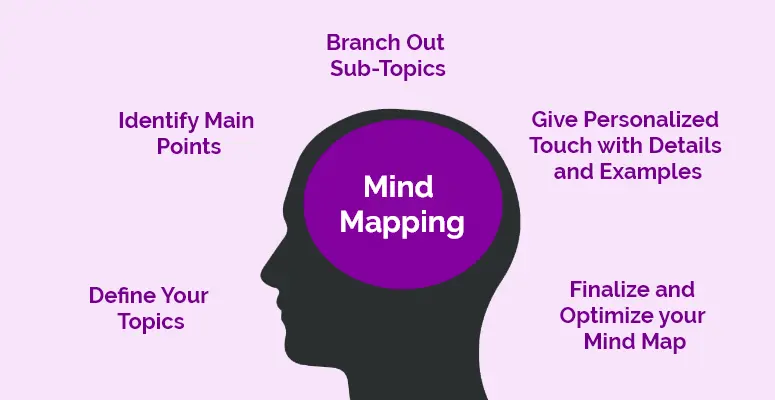
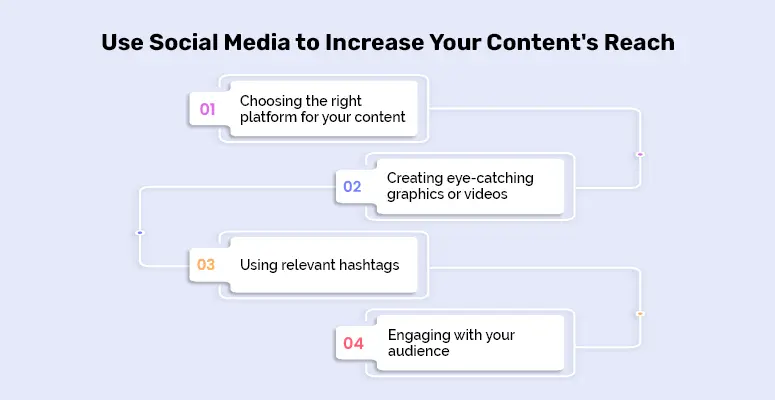
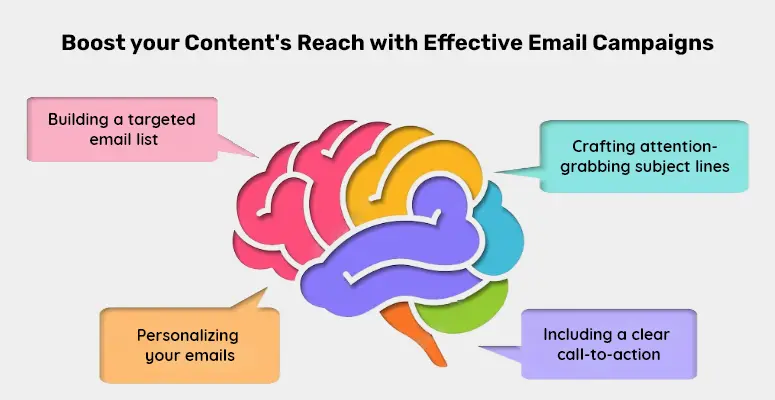
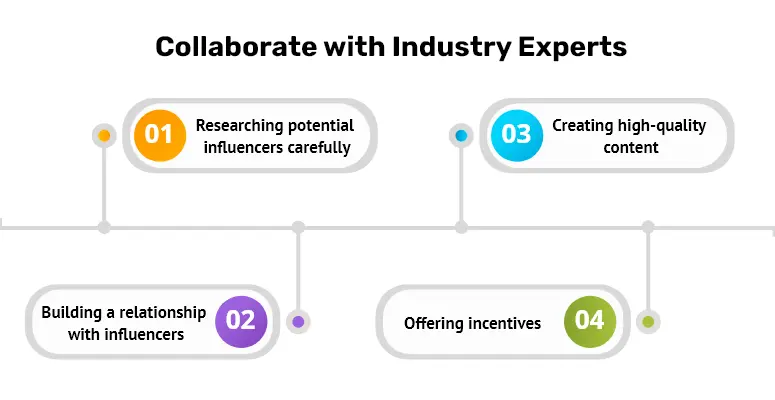

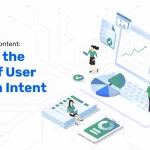
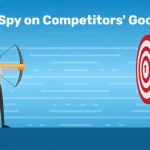
Pingback: The Benefits Of Tracking Branded vs Non Branded Keywords